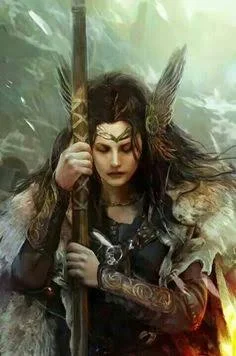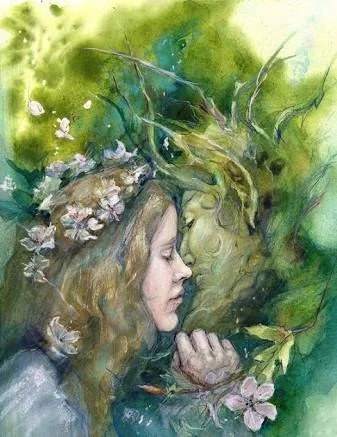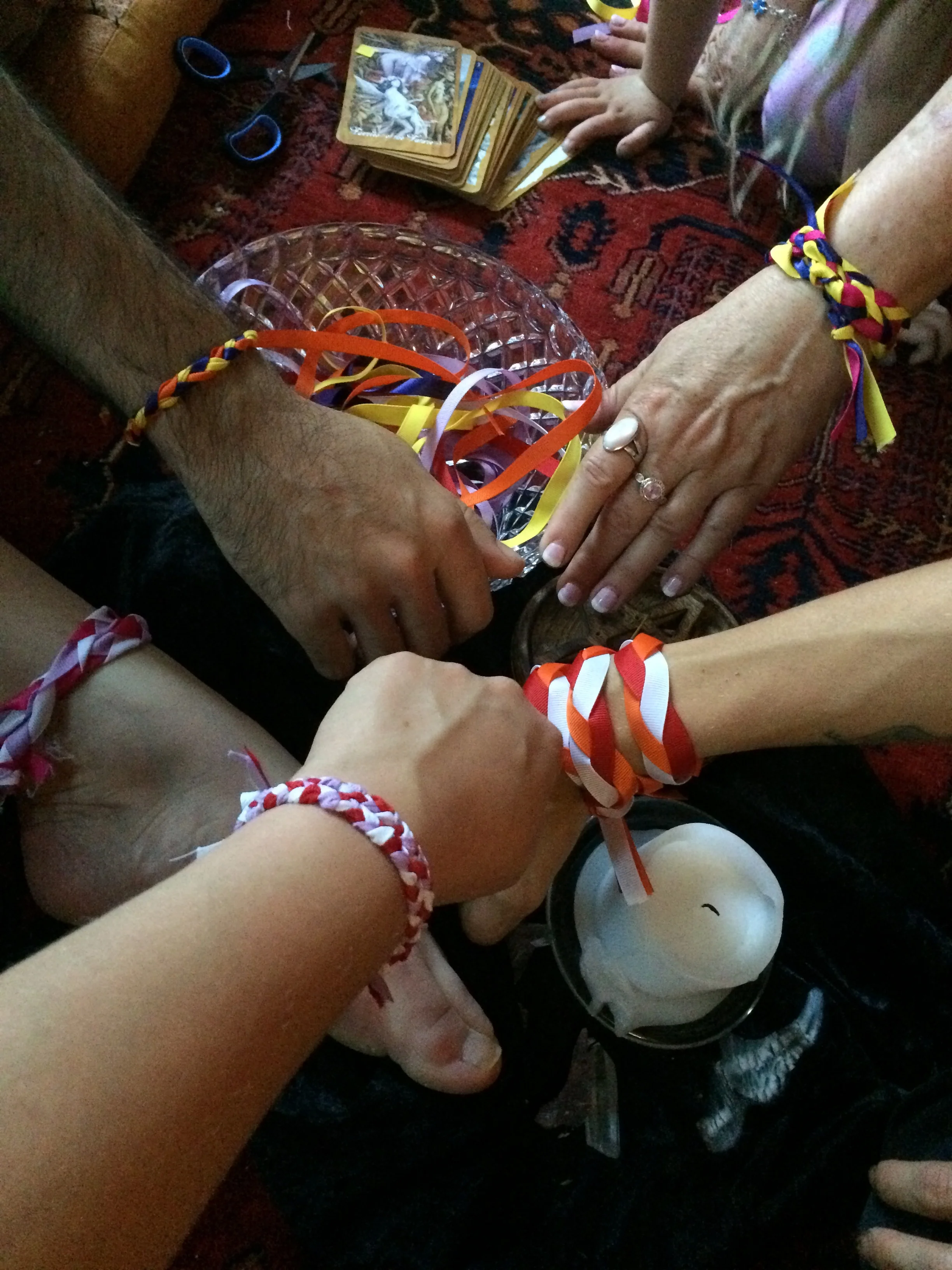A Story of Beltane
Beltaine or Beltane, is Gaelic for "Bright Fire" it is a Pagan Sabbat, a Celtic fire festival that falls directly in between the Winter Solstice and the Summer Solstice. In the Northern Hemisphere, where Beltaine originated it falls on 30th of April - 1st of May. Here in the Southern Hemisphere it is the opposite side of the wheel of the year falling on the 31st of Oct - 1st of November.
At the beginning there were only two main Sabbats celebrated at opposite poles of the year one for rebirth and one for death. Beltaine celebrated the turn to the lighter side of the year, the Earths growth, fertility and the fruits in abundance and then the shadow side of the year was celebrated as Samhain, honouring the dormancy of the Earth, our loved ones whom have passed and a time to retreat. We know Samhain as All Hallows Eve or Halloween which seasonally would be in the Autumn before the coming of Winter. Both are times when the viel is thin between our world and the other realms, Beltane opens to connection with the nature spirits the Fae as the come out of hibernation and Samhain is a time when communication with our ancestors and other spirits is closer to the surface.
Beltaine is known as a fire festival as Bon Fires feature prominently throughout the rituals. It is thought to jump over the fire will cleanse you as you move into the lighter months and cattle will be run between two big blazing fires for the smoke and embers to clear them of disease, ticks and Lice to keep them healthy and secure a good season and harvest.
The turning of the wheel of the year represents the flow of energy in and out, from rebirth to death and back again. Goddess energy is representative of feminine energy and God of the masculine - they must maintain their balance and work in sync. They flow through phases just like the moon builds with energy as a waxing moon, grows with intent to embody the full phase and then ebbs away as a waning moon. There also represents the Maiden to Mother to Crone flow of the triple Goddess energy. Thus representing the youthful learning and experiencing of the maiden, waxing or the spring time energy then flowing to the growing, expanding and nourishing of the Mother, Full or Summer abundance energy then to flow onto the teaching, guiding and releasing of the Crone, waning or Autumn changing to Winter energy of the Earth and her cycles.
Beltane brings a connection to many aspects of our world. 'The Great Rite' is known as the sexual union of God and Goddess, the coming together of both masculine and feminine energy, combining power and bringing forth life force. It is a spring fertility festival, a time for lovers to make love freely and openly - even outside in nature! A time to celebrate union with hand-fasting ceremonies that bind souls together with ribbons and ritual - a Pagan marriage.
You may have heard the story of May Day or the May Pole, it is a strong aspect of Beltane and the union of the masculine and feminine. With the trunk of the Yule tree saved from Winter Solstice (Yep that's the common Christmas tree, also sprouted from pagan tradition) stripped and planted in the Earth it represents the God planting his phallus within the Goddess Earth as her body. With a wreath of flowers symbolising the feminine the riboons are woven in different directions as people dance around the maypole, intertwining white for the Goddess with red for the God to symbolise their union in The Great Rite.
As a fertility festival, Beltane honours our connection to the earth. An initiation of Summer it is a celebration of abundance of all the fruits that summer does bare and a giving of thanks to our earth for providing.
Here falls the connection to the Fae, the nature spirits, elementals, the guardians of the earth and the changing of the seasons. The Fae are now coming out of hibernation. They are coming out to play after a winter dormancy, the birth of the light awakens them to dance under the warming moonlight and frolic in the blossoming fields.
Celtic tradition told the tales of Maeve the Faerie Queen. She is the main deity of Beltaine. The other Deities of Beltaine include Druantia of the Druids, Flora of Rome and Cybele an ancient fertility Goddess. The King married The Faerie Queen in order to be a true ruler of both this realm and the other, he needed to keep one foot in each world and planned to use Maeve and her influence to do so. Maeve oversaw all parties and gatherings where the Fae and Humans joined together, she provided a source of protection, leadership and upheld justice with strong morals but she was not one to be manipulated.
Maeve was also known as a deity of intoxication - causing all those who laid eyes on her to fall deeply with lust and desire. Her body was the Earth, the rushing waters of rivers, the wind through the mountains and fertile fields. No one could resist her temptations - it is said that it was Maeve who seduced the God in his full form of masculinity in the forest on the Eve of Beltane.
The Celtic people would worship Maeve and her faerie folk. In Northern Europe it would be the 1st of May, May Day also coinciding with International faerie Day. The Fae would come out of their hibernation feeling cheeky and mischievous. They would play pranks on the townspeople so to keep on the Fae's good side tradition was born to leave an offering of milk honey and cakes - anythings sweet the Fae would adore. they would also avoid travelling, trun their clothing inside out our wear something red, to honour Maeve - as this was the colour of her cape that she was known to wear. It was a time of ritual to call on Maeve's assistance to handle any wrong doings or injustices. One type of ritual was to carve into a well toasted slice of bread that which needed justice "Wages" for example.
When Maeve and the king had a son it was accepted he was to one day rule. Maeve was happy to see her son rule until she witnessed him begin to lose his moral integrity. When he would not listen to her reason, Maeve raised an army to combat his moral injustices. Her army was led by Maeve on top a chariot pulled by a bull, they would cause the opposing armies men to fall down with labour pains as Maeve rode through. - They fought until both sides had torn each other apart.
So as the story of the year goes, the Goddess in Maiden form comes across the God deep in the forest, in his full masculinity and power. It is told this is Maeve and the 'Greenman' who meet and make love to ignite the birth of the earth's abundance of fruits that is Summer. The Goddess flourishes in beauty throughout the spring to summer as she is radiantly pregnant. The God dies and brings forth the winter as the Goddess mourns his death, Autumn to Winter until her son is born at Winter Solstice, Yule and he grows and becomes the strong young God again at Beltaine. The circle continues.
The Greenman is represented as a green face surrounded by leaves and is a symbol of rebirth. He is sometimes represented with Horns as the Horned God also known as Cernunnos. The 'Wild God if the Forest' Cernunnos, is a god of fertility and vegetation a Celtic deity of lust he is often associated with the Pan and there are tales of him singing to the dying to comfort them as they pass. He dies in the fall and with grief of the earth and of the Goddess, the land goes dormant over winter until he is reborn again, from the Goddess to continue the cycle.
You may like to celebrate Beltaine by creating an offering to appease the Fae with some milk and honey or other special treats, why not invite friends around for a feast and make a bonfire from your old Yule tree and jump over the flames, you could even make your own May Pole or representations of the intertwining god and goddess energies - we made woven ribbon bracelets, you could weave flower crowns and dance or even make love!
Beltane Blessings
Love Dania xx






